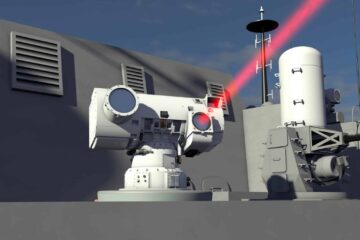Story by Nathan Gain, editing and additional reporting by Xavier Vavasseur
This follows a prior information notice (PIN) issued by the same TTH project team in March, as reported by Naval News. A major new requirement emerged however with the contract notice issued on August 19 compared to the PIN: A terrain following precision maritime land attack capability.
The TTH project team, part of the UK Ministry of Defence, hereafter referred to as the authority, has a requirement for the provision and introduction into service of the I-SSGW system as an interim replacement for the existing system that is going out of service.
The I-SSGW is to provide a ship launched over the horizon precision anti-ship capability and a terrain following precision maritime land attack capability.
It is anticipated that the I-SSGW capability will operate on X 5 Type 23 (Towed Array) frigates capable of concurrent Anti-submarine warfare (ASW) and Anti Surface Warfare (ASuW) operations in protection of a formed Maritime Tasking Group, for a 10-year period.
UK Ministry of Defence, Weapons, Torpedoes, Tomahawk and Harpoon (TTH) Project Team’s contract notice issued August 19, 2019.
The «terrain following precision maritime land attack capability » virtually disqualifies a number of anti-ship missiles avaiable off the shelf, including Boeing’s Harpoon, South Korea’s C-STAR or MBDA’s Exocet. These three missiles only feature a limited way-point guidance capability and limited coastal (shore based) target capability. But they lack the, now key, terrain following capability.
With this new requirement in mind, likely remaining bidders for the the SSGW requirement include Lockheed Martin with the Long Range Anti-Ship Missile (LRASM), Kongsberg with the Naval Strike Missile (NSM) and Saab’s RBS15 Mk4 , three anti-ship missiles of the latest generation. It is not clear whether Turkey’s Atmaca or Israel’s Gabriel V anti-ship missiles feature terrain following capability but this seems unlikely.
According to the contract notice, the I-SSGW solution is set to fill a gap for a 10-year period. First delivery of the ship installed equipment would be required by December 2022 and first delivery of missiles would be required by December 2023. The potential contract will be for 4 years, with the potential of option years to follow (up to 9 more years). This should answer the Royal Navy’s needs until the early 2030’s and the implementation of the UK-French FC/ASW missile program.
Following the Lancaster House agreement of 2010, France and the United Kingdom launched in 2017 a joint program with the goal to replace their cruise and anti-ship missiles circa 2030.
Naval News will try to learn more from the likely I-SSGW bidders at DSEI 2019 in a couple of weeks. Make sure to follow our DSEI news coverage from the show floor.






